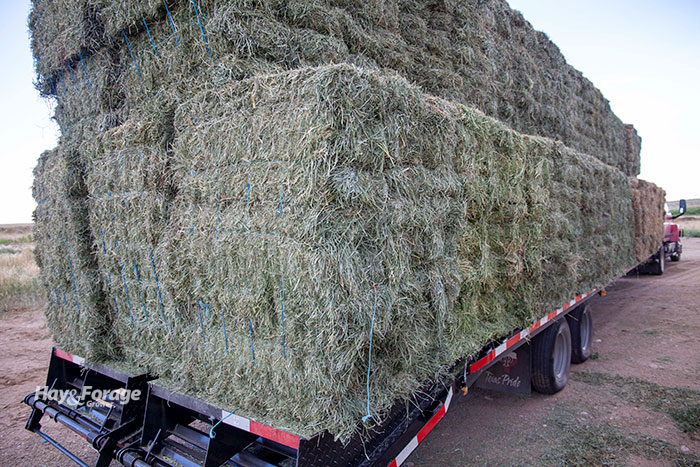
Making hay on your own farm or purchasing hay from a trusted neighbor generally means that you can be pretty sure of what you’re getting. When hay inventories are stressed in a region such as the Northern Plains in 2021, the situation may require purchasing hay from a distance from someone you’ve never had previous business dealings with.
“When purchasing feedstuffs, it is important to ask a lot of questions to avoid issues related to poor forage quality, contamination with weeds, and the presence of toxins such as nitrates,” says Janna Block, North Dakota State University (NDSU) Extension livestock systems specialist based at the Hettinger Research Extension Center. “Clear and honest communication from both parties can help ensure a successful business transaction.”
Block suggests in a recent NDSU news release that the following information be obtained before finalizing any transaction:
• Month and year of harvest
• Packaging and type of wrap (net wrap, twine, or plastic)
• Average bale weight
• Species composition
• Potential for presence of noxious weeds, mold, or other anti-quality factors
• Length and method of storage
The livestock specialist strongly encourages hay buyers to request a forage analysis. “If sellers have not submitted samples for analysis, request them to do so,” Block asserts. “Dry matter content, crude protein, and an estimate of energy are necessary for making an informed decision about purchasing a particular type of forage. Be sure to compare the price of feedstuffs on a dry matter basis.
Even if results of laboratory analysis are available, producers are often purchasing hay sight-unseen, which makes it difficult to evaluate physical factors such as leafiness, maturity, color, smell, and bale condition of the bales,” she adds.
Block suggests that long-distance buyers request pictures of the bales or, if possible, take the time to inspect them in person prior to purchase.
Species such as sorghum and sudangrass, drought-stressed corn, and annual cereals such as oats, barley, and wheat have the potential for high levels of nitrate. If there is a nitrate concern, have the forage tested before feeding.
In addition to nitrates, there may be other anti-quality components present in forages that can be difficult to quantify or evaluate. These include structural components of the plant or secondary metabolites that can cause toxicities and nutrient imbalances in livestock.
“Grasses such as tall fescue, perennial ryegrass, and reed canarygrass can produce alkaloids (plant compounds) that associate with a fungus and cause heat intolerance, lameness, reduced feed intake, and other animal performance issues,” Block says.
Transportation costs can add significantly to the hay’s purchase price. Determine what trucking will entail, or if it’s even available, before closing the deal. Trucking charges can be based on loaded miles or roundtrip miles. If the seller is doing the trucking, transportation costs will likely be included in the final hay purchase price. In some regions, hay transportation assistance is available through the local USDA Service Center.
Finally, make sure not to fall prey to a hay-selling scam. Any communication or payment method that seems out of the ordinary is cause for concern.

